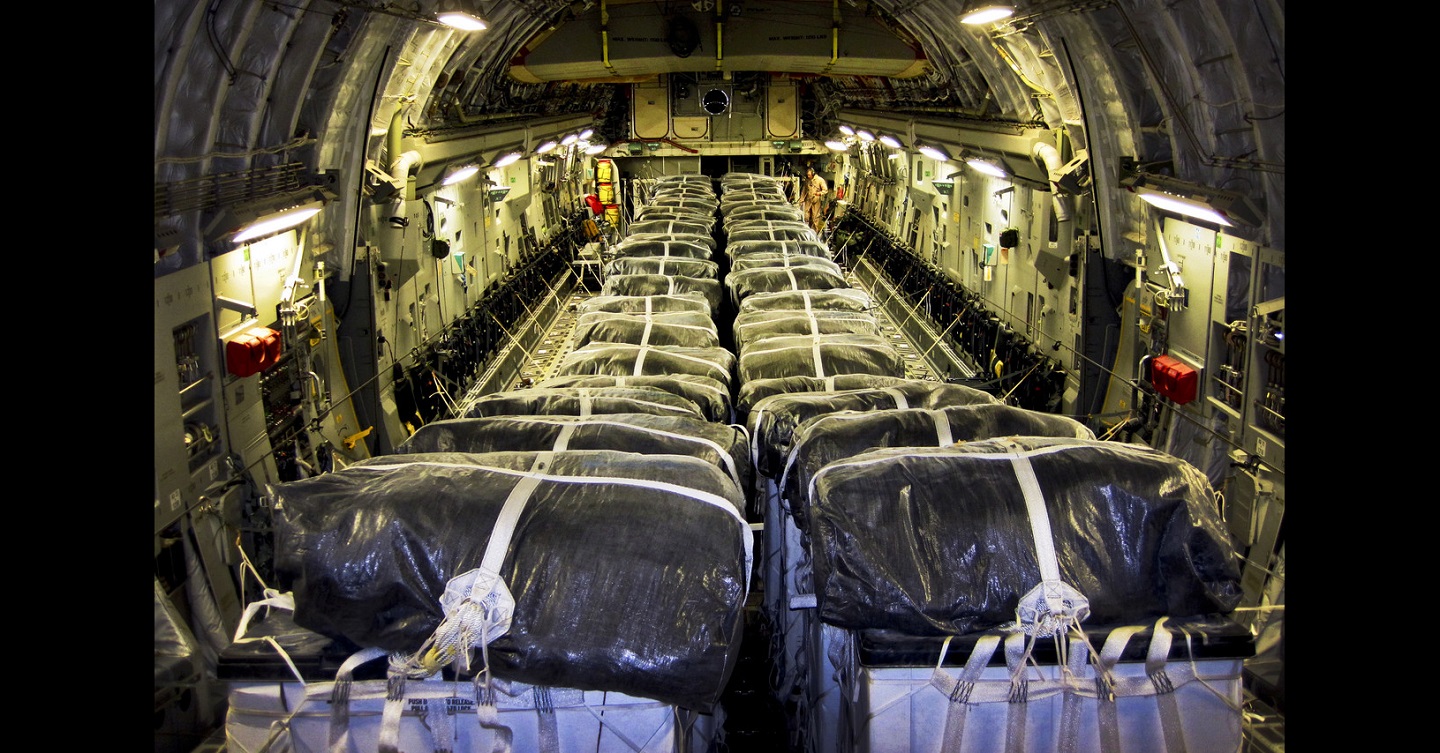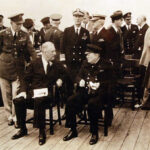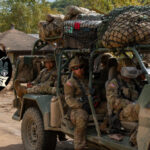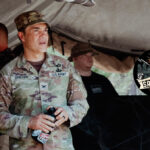
To really have a successful mission you have to be willing to stay
A BETTER PEACE welcomes Mary Elizabeth Walters to discuss to calculus of humanitarian operations involving the U.S. military. The decision to render aid or enter into humanitarian operations in another country isn’t always an easy one. It may seem like a simple endeavor, help wherever and whoever you can, but what happens when helping ends up hurting in the long run? Mary Elizabeth and WAR ROOM Editor-In-Chief Jacqueline Whitt sit down in the studio to discuss the question “When should the United States execute humanitarian operations and what questions should be asked and answered before it begins?”
Podcast: Download
Dr. Mary Elizabeth Walters is an Assistant Professor of history at Kansas State University. Jacqueline E. Whitt is an Associate Professor of Strategy at the U.S. Army War College and the Editor-in-Chief of WAR ROOM. The views expressed in this presentation are those of the speakers and do not necessarily reflect those of the U.S. Army War College, U.S. Army, or Department of Defense.
Photo Description: Water bundles align a C-17 Globemaster III prior to a humanitarian air drop, Aug. 8, 2014, Al Udeid Air Base, Qatar. The 816th Expeditionary Airlift Squadron aircrew, air dropped 40 bundles of water for Iraqi refugees during a humanitarian air drop over Iraq.
Photo Credit: U.S. Air Force photo by Staff Sgt. Vernon Young Jr.
Articles and Episodes related to this topic:
WHY DOES THE MEDIA COVER STORIES IN SOME COUNTRIES … BUT NOT OTHERS?
THE CONNECTION BETWEEN PEACEKEEPING AND INCREASED SEX TRAFFICKING





Regarding such things as the importance of “humanitarian assistance” — and where such activity would seem to “fit” within the overall scheme of things — this may best be viewed from the perspective offered by certain parts of Joint Publication 3-29, Foreign Humanitarian Assistance, dated 14 May 2019:
First, from Chapter 1 (“Overall”), Paragraph 1 (“General”), beginning on Page I-3:
“h. Related Terminology: The following terms and descriptions are important to form a basis for understanding FHA operations:
(1) Foreign Assistance is civil or military assistance rendered to a nation by the USG within that nation’s territory based on agreements mutually concluded between the US and that nation. Foreign assistance supports the HN by promoting sustainable development and growth of responsive institutions. THE GOAL IS TO PROMOTE LONG-TERM REGIONAL STABILITY. Foreign assistance may include security assistance and development assistance and can support foreign internal defense (FID) and stability activities.
(For further information, refer to JP 3-0, Joint Operations.)
(2) Development Assistance refers to programs, projects, and activities primarily designed to promote economic growth and improve the lives of the citizens of developing countries while furthering US foreign policy interests in expanding democracy and promoting free-market economic growth.”
Next, from Appendix C, “Department of State and United States Agency for International Development Organizations,” beginning on Page C-1, we see similar language:
“1. Department of State:
a. The mission of DOS is to create a more secure, democratic, and prosperous world for the benefit of the American people and the international community. American diplomacy in the 21st century is based on fundamental beliefs: our freedom is best protected by ensuring others are free, our prosperity depends on the prosperity of others, and our security relies on a global effort to secure the rights of all. Millions of the world’s poor have not yet benefited from globalization, increasing their risk of alienation. Furthermore, transnational threats have emerged from globalization, spreading disease via the most mobile population in history. Famines and civil conflicts have erupted in countries steeped in poverty or constrained by autocratic rulers, creating waves of refugees and swelling the ranks of internally displaced populations.
b. DOS and USAID will work with US NGOs, institutions of higher learning, and private-sector partners who share USG objectives and help leverage our resources. By providing vital links to the American people and to counterpart organizations and institutions overseas, DOS’s US partners help represent the best in America’s technical, humanitarian, and management skills.”
From the perspective offered above, which tells us — in no uncertain terms — that:
a. “The basis for understanding foreign humanitarian operations,” this is to be found in:
b. Understanding the nexus between (a) “expanding democracy and promoting free-market economic growth” and (b) achieving “long-term regional stability;”
From this such “transformative” perspective, are we not now better able to understand Dr. Walter’s contention that:
a. “To really have a successful mission,”
b. “You have to be willing to stay?”
(Problem: Given, as articulated in the “United Nations Humanitarian Principles” item found at the top of Page I-3 of JP 3-29, that “humanitarian action must be autonomous from the political, economic, military, or other objectives that any actor may hold with regard to areas where humanitarian action is being implemented;
Given this such guidance — and given the exceptionally NON-AUTONOMOUS understanding for U.S. humanitarian action outlined above;
Given these such matters, should we not, accordingly, understand that, [a] in the case of the United States [and, indeed, most other states and societies also], [b] this such UN guidance will largely be ignored?)